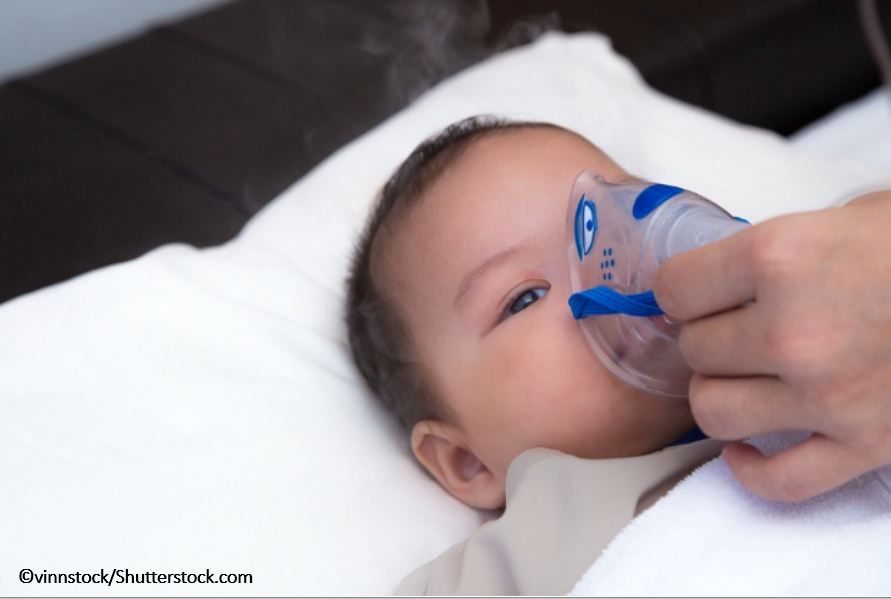Post-ED Discharge Follow-up Visit for Acute Bronchiolitis Linked to Subsequent Hospital Admission
Infants who attended a recommended follow-up clinic visit after being seen in an ED were also slightly more likely to receive medications outside of guideline recommendations.
Among a large cohort of commercially insured children aged less than 2 years with an emergency department (ED) visit for acute bronchiolitis, approximately half completed a follow-up visit within 7 days of ED discharge, according to findings published in a research letter to JAMA Network Open.
While a primary care follow-up was not associated with ED revisits, it was associated with a 41% greater likelihood of a subsequent hospitalization, an outcome investigators suggest may be related to overdiagnosis at the follow-up visit.
©vinnstock/Shutterstock.com

The investigators cite disagreement on the value of routine posthospitalization follow-up visits for otherwise healthy children with acute bronchiolitis but point out that little is known about the value of the practice for children discharged from an ED after evaluation for the infection. Anecdotal evidence suggests this is a default for many ED physicians, they wrote, but there is currently no evidence for national practice patterns.
The objective for their study was to quantify postdischarge follow-up visits “in a national cohort of ED encounters for bronchiolitis and to then determine whether follow-up was associated with decreased hospital reutilization or increased treatment with nonrecommended medications,” according to first author Daniel Shapiro, MD, MPH, from the Division of Pediatric Emergency Medicine at the University of California, San Francisco, and colleagues.
For the retrospective study, Shapiro et al tapped the MarketScan Commercial Claims and Encounters Database for ED discharges between 2018 and 2021 among children aged less than 2 years with a diagnosis of acute bronchiolitis. Their primary outcome of interest was a primary care follow-up visit within 7 days postdischarge from an ED.
The team identified several secondary outcomes of interest as well: ED revisits without subsequent hospitalization, hospitalization, and any prescription for medications not recommended by national clinical guidelines to treat the lung infection, to include corticosteroids, albuterol, and antibiotics.
Multivariable Cox proportional hazard models, used to assess associations between follow-up and hospital reutilization, included follow-up as a time varying exposure and adjusted for a range of variables: age, region, year, sex, weekend discharge, previous outpatient and ED visit history, an outpatient visit for bronchiolitis within 7 days of the index ED visit and testing and treatment at the index ED visits.
Among the 28 338 ED discharges identified, reflecting 27 000 unique subjects, 63.3% of the children were younger than 1 year of age and 58.8% were boys. The researchers reported follow-up visits within 7 days of for 47.6% of the ED discharges. They also describe a decrease over the study period in the proportion of discharges with a follow-up from 48.9% in 2018 to 43.4% in 2021.
FINDINGS
Shapiro and team reported that within 7 days after ED discharge, 17.6% (95% CI, 17.1%-18.0%) of the children had an ED revisit and that 5.2% (95% CI, 5.0%-5.5%) of these revisits resulted in a subsequent hospital admission.
Primary care follow-up visits, the team found, were not associated with ED revisits (adjusted hazard ratio [aHR], 1.09; 95% CI, 0.93-1.27), however the visits were associated with a 41% greater likelihood of hospitalization (aHR, 1.41; 95% CI, 1.20-1.65).
When the researchers assessed associations between follow-up visits and medications dispensed, they found that prescriptions for corticosteroids, albuterol, and antibiotics were filled more commonly for children who had been to a subsequent appointment. Specifically, they reported that after the follow-up visit, 5.4% (95% CI, 4.9%-5.9%) had prescriptions filled for corticosteroids, 12.2% (95% CI, 11.5%-12.8%) for albuterol, and 18.5% (95% CI, 17.8%-19.3%) for antibiotics.
...they found that prescriptions for corticosteroids, albuterol, and antibiotics were filled more commonly for children who had been to a subsequent appointment.
They note that the observed association between a follow-up visit after ED discharge and subsequent hospital admission may be related to “confounding by indication (ie, children with more severe illness may be more likely both to follow up and to be hospitalized) or by overdiagnosis at follow-up.”
“Given that follow-up visits are common, vary in frequency according to visit characteristics, have uncertain benefits, may result in overtreatment, and carry costs to families and the health care system, prospective investigation is warranted to determine which children with bronchiolitis may benefit from routine follow-up,” investigators concluded.
Source: Shapiro DJ, Bourgeois FT, Fine AM, et al. National patterns of outpatient follow-up visits after emergency care for acute bronchiolitis. JAMA Netw Open. 2023;6(10):e2340082. doi:10.1001/jamanetworkopen.2023.40082
Newsletter
Enhance your clinical practice with the Patient Care newsletter, offering the latest evidence-based guidelines, diagnostic insights, and treatment strategies for primary care physicians.